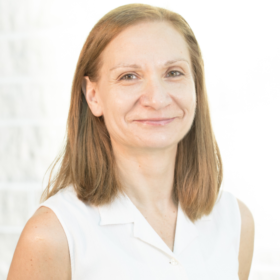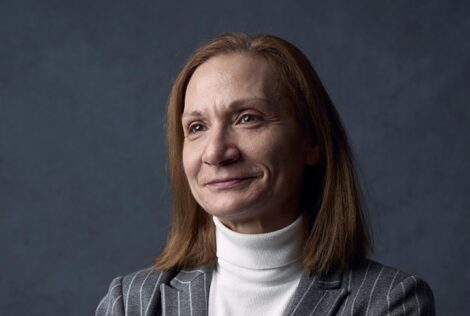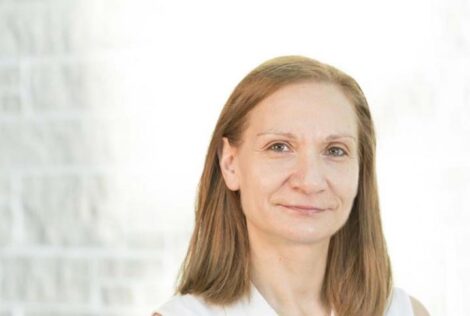
Expertise
Areas of Specialization
Research Clusters
Current status
-
Accepting graduate students
-
Professor
Electrical & Computer Engineering
-
Associate Chair (Research)
Electrical & Computer Engineering
Overview
My team works on radio-frequency, microwave and millimeter-wave imaging and detection. This research area is the next frontier of wireless technology. Our current focus is on: (i) the detection of on-body concealed weapons on walking persons, (ii) microwave breast imaging for cancer screening, and (iii) detection of structural flaws (e.g., cracks and pits) under protective coatings in industrial applications.
Our cognitive radar for the stand-off detection of on-body concealed weapons detects various threats such as handguns, knives, grenades and explosive vests hidden under the clothing of persons who may be standing or walking nearby (within a range of about 3 m). It is small and inconspicuous enabling covert surveillance. It can be installed behind the wall, at an entranceway, a foyer, or a hallway. Our long-term goal is to deploy networks of such radar units, which will work in collaboration with CCTV cameras, providing much needed layer of security in public transit, schools, places of entertainment, etc.
My team is also in the forefront of the development of near-field microwave imaging systems with applications in tissue imaging and non-destructive testing. We are developing a new generation of electronically-switched microwave sensor arrays that will provide unprecedented scanning speeds. Each sensor in the array is a miniature radio. Our goal is to reduce the acquisition time and the image generation to less than a minute. An exciting application of this technology is a compact, safe, and low-cost microwave scanner for early-stage breast-cancer detection that could increase dramatically the accessibility and the efficiency of the breast-cancer screening programs.
Did you know?
Prof. Nikolova authored the book titled “Introduction to Microwave Imaging”. This first-ever introductory-level text targets a diverse audience of beginners: graduate students, RF/microwave engineers who are venturing into the field of imaging, and imaging experts who want to learn about the use of microwaves and millimeter waves in the imaging of optically obscured targets.
The concealed-weapon detection radar technology developed by Nikolova’s microwave team is being commercialized by Patriot One Technologies Ltd. Patriot One won the Award for Anti-terrorism/Force Protection at ISC West 2017.
Prof. Nikolova was elevated to a Fellow of the IEEE by the IEEE Microwave Theory and Techniques Society in 2011 for her work on methods for the sensitivity analysis of high-frequency electromagnetic structures. This work helped accelerate dramatically the computer-aided design of microwave components and antennas.
Prof. Nikolova served as a Distinguished Microwave Lecturer of the IEEE from 2010 to 2013 and she has delivered more than 50 lectures around the world along with two IEEE webinars (2018 and 2021) on the topics of microwave and millimeter-wave imaging, biomedical applications of microwave imaging, and high-frequency computer-aided design.
Natalia K. Nikolova received the Dipl. Eng. (Radioelectronics) degree from the Technical University of Varna, Bulgaria, in 1989, and the Ph.D. (Electrical Engineering) degree from the University of Electro-Communications, Tokyo, Japan, in 1997. From 1998 to 1999, she held a Postdoctoral Fellowship of the Natural Sciences and Engineering Research Council of Canada (NSERC). In July 1999, she joined the Department of Electrical and Computer Engineering, McMaster University, where she is currently a Professor. Her research interests include microwave/millimeter-wave imaging and inverse scattering, theoretical and computational electromagnetism as well as computer-aided design of high-frequency structures and antennas. Prof. Nikolova has authored two books and has contributed chapters to seven books. She has published more than 300 referred articles, and she is a holder of seven patents. She has delivered more than 50 invited lectures and webinars internationally. Dr. Nikolova is a Fellow of the Institute of the Electrical and Electronic Engineers (IEEE), the Canadian Academy of Engineering (CAE), and the Engineering Institute of Canada (EIC). She is a registered professional engineer in the province of Ontario.
Dipl.Eng. (M.Eng. equivalent) (Technical University of Varna, Bulgaria) ; Ph.D. (University of Electro-Communications, Tokyo, Japan)
Fellow of the Institute of Electrical and Electronic Engineers (IEEE)
Fellow of the Canadian Academy of Engineering (CAE)
Fellow of the Engineering Institute of Canada (EIC)
Canada Research Chair (Tier 2) in High Frequency Electromagnetics (2008-2018)
Joseph Ip Distinguished Engineering Professor, McMaster University
P.Eng. (ON)
Recent
Accepted
1. D.S. Shumakov and N.K. Nikolova, “Fast quantitative microwave imaging with scattered power maps,” IEEE Trans. Microwave Theory Tech. (accepted Apr. 13, 2017)
Published
2. D.S. Shumakov, A.S. Beaverstone, and N.K. Nikolova, “De-noising algorithm for enhancing microwave imaging,” The IET J. Eng., DOI: 10.1049/joe.2016.0207, Mar. 2017.
3. A.S. Beaverstone, D.S. Shumakov, and N.K. Nikolova, “Integral equations of scattering for scalar frequency-domain responses,” IEEE Trans. Microwave Theory Tech., vol. 64, no. 4, pp. 1120–1132, Apr. 2017.
4. D.S. Shumakov, A.S. Beaverstone, and N.K. Nikolova, “Optimal illumination schemes for near-field microwave imaging,” Progress in Electromagnetic Research (PIER), vol. 157, pp. 93–110, 2016.
5. S. Tu, J.J. McCombe, and N.K. Nikolova, “Fast quantitative microwave imaging with resolvent kernel extracted from measurements,” Inverse Problems, vol. 31 no. 4, 045007, (33 pp), Apr. 2015.
6. R.K. Amineh, J. McCombe, A. Khalatpour, and N.K. Nikolova, “Microwave holography using measured point-spread functions,” IEEE Trans. Instrum.&Meas., vol. 64, no. 2, pp. 403– 417, Feb. 2015.











